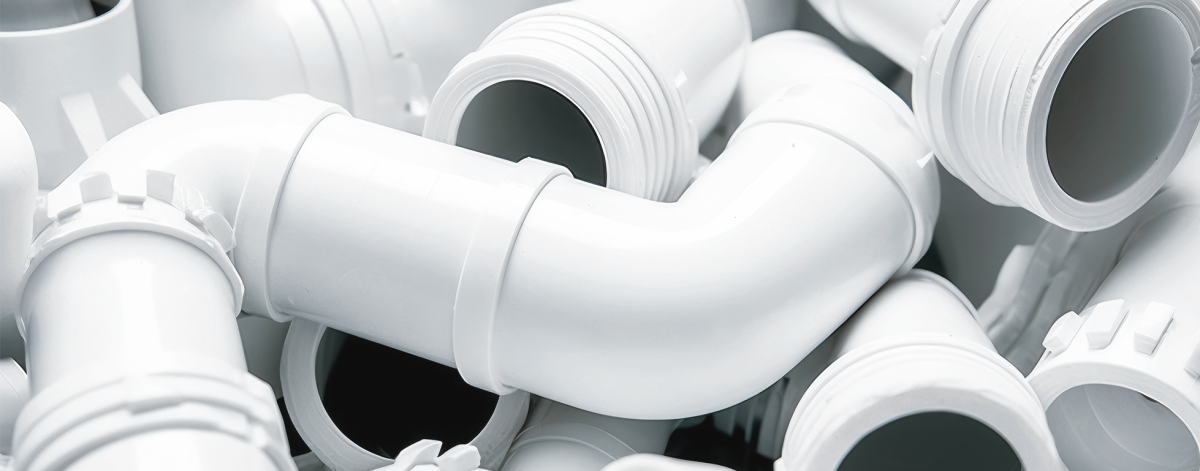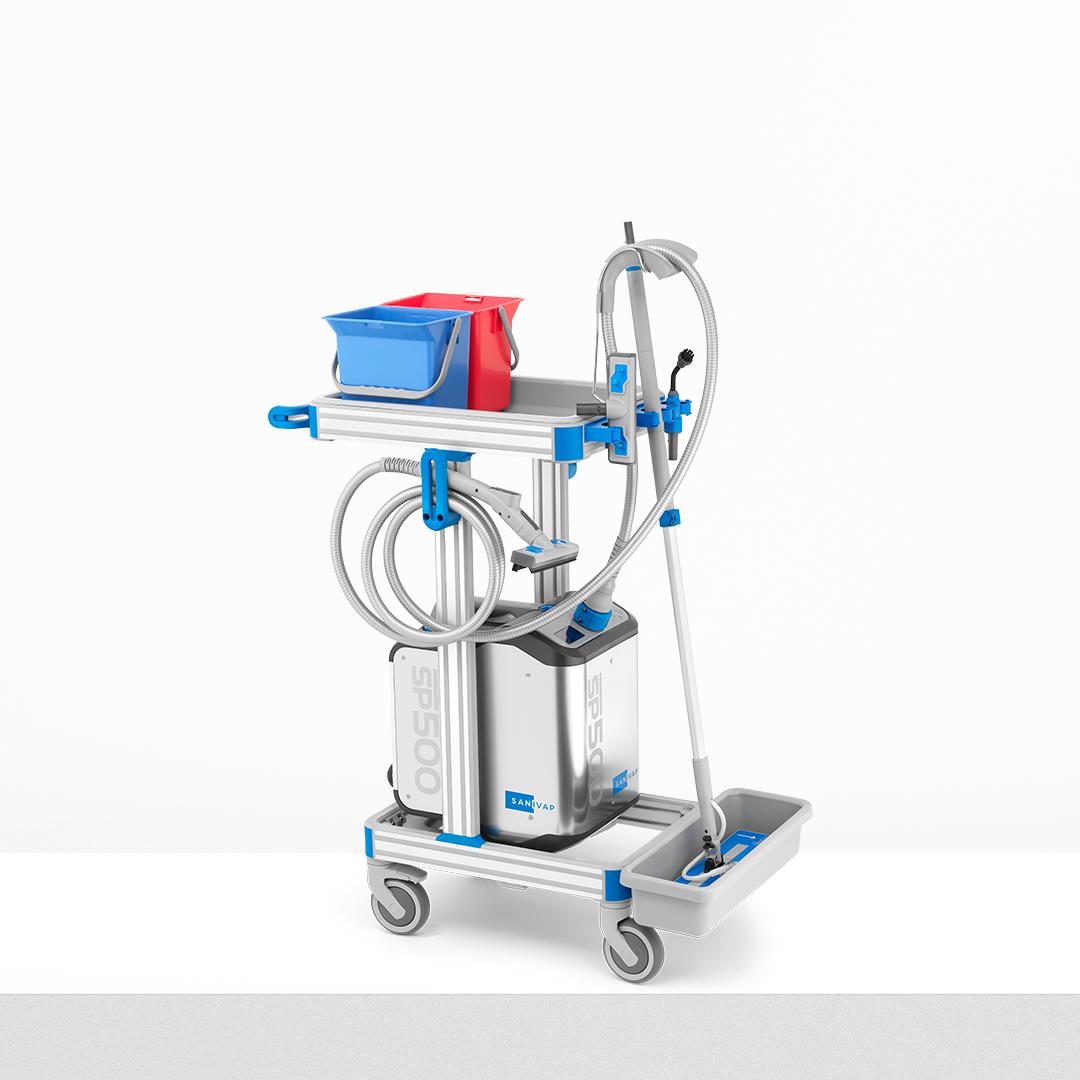Published on 05/23/2024
Bacterial contamination of siphons is a recurring problem in hospital establishments. Sanivap, the French specialist in steam biocleaning which has developed a unique device for cleaning and disinfecting surfaces and medical devices, is innovating with a specific disinfection method for siphons. Explanations from Mathieu Agnet and Pascal Queyrel, respectively scientific director and commercial director at Oxy’pharm and Sanivap.

Bacterial contamination of siphons is a recurring problem in hospital establishments. SANIVAP, the French specialist in steam biocleaning which has developed a unique device for cleaning and disinfecting surfaces and medical devices, is innovating with a specific disinfection method for siphons. Explanations from Mathieu Agnet and Pascal Queyrel, respectively scientific director and commercial director at OXY’PHARM and SANIVAP.
THE SIPHON: A MICROBIAL RESERVOIR SOURCE OF CARE-ASSOCIATED INFECTIONS (HAI)
“In hospitals, antibiotics have been used for a very, very long time in a preventive and curative manner, and sometimes in an extremely massive manner, with the consequence of the development of antibiotic resistance in many lineages of microorganisms and the increasing difficulty of treating patients” explains Mathieu Agnet. “In fact, there is the contamination of the siphon itself and then the contamination of the nursing staff or patients by the siphon. Washing of hands, emptying of basins following washing of bedridden patients. are all actions that are sources of bacterial contamination of the siphons. Then, when the siphons are colonized by bacteria, contamination of people results from the “splash effect”: the water falls into the siphon and squirts, generating droplets which. then contaminate the environment around the water point as well as the hands, the coat of caregivers, and possibly the patient if he is near the water point. You can imagine that the situation is even more worrying for immunocompromised patients, in burn units and/or in intensive care.”
Mathieu Agnet also draws attention to the contamination that can come from water. “The presence in the water of minerals forming a rough deposit on the surfaces of the siphons and the development of organic matter contribute to the formation of a biofilm, a real “hotel-restaurant” for bacteria.”
HOW TO SOLVE THE PROBLEM OF BACTERIAL CONTAMINATION OF SIPHONS ?
Knowing that the siphons are devices that are difficult to access, that they are colonized by pathogenic bacteria and by BHRe (emerging Highly Resistant Bacteria) and that they are also the seat of a large humid biofilm constantly supplied, it is important , according to Pascal Queyrel, “to have a combined method which will make it possible not only to eliminate the biofilm but also the microorganisms present.” Various proposals have been made as recalled by our experts, referring in particular to publications including that of Philippe Hartemann, professor of public health in Nancy. “The simplest chemical solution was to pour bleach or other disinfectants down the drain with an uncertain microbiological result.” Other solutions have been tested such as the heated siphon or the removable siphon but did not have the expected results. “All these methods which, in addition to not being very effective, have major disadvantages such as the difficulty of implementation and especially the danger for people and pollution of the environment when chemicals are handled ” notes Mathieu Agnet.
THE SANIVAP DEVICE: THE COMPLETE SOLUTION THAT COMBINES SIMPLICITY, PERFORMANCE AND ECO-COMPATIBILITY
The goal of the Sanivap method is to provide heat and use steam to eliminate both the biofilm and the microorganisms that colonize the siphons. “If we refer to the Circle of Sinner” explains Mathieu Agnet, “the SANIVAP process involves steam which will exert a mechanical action and heat which will allow the organic molecules which constitute the biofilm to be disrupted and disinfected. We are the only ones to offer a complete solution that ticks all the boxes.” Pascal Queyrel adds that “the SANIVAP device for biocleaning siphons is the most advanced method for dealing with the problem of siphon contamination, scientifically proven and without the use of chemical substances dangerous to humans or the environment.

THE SANIVAP METHOD OF STEAM BIOCLEANING OF SIPHONS SCIENTIFICALLY VALIDATED

“Before putting the Sanivap device on the market, the first step was to carry out a feasibility study and to scientifically show that the process is effective” indicates Pascal Queyrel. “The work carried out with the Fonderephar laboratory allowed us to do this. Then, two in situ studies were carried out, one at the Toulon CH and one at the Rangueil CH to verify the effectiveness of the process. After presenting the results which prove the seriousness and interest of the product, comes the deployment stage in hospital services: for example Poitiers, Brest or Toulon which also now has around a hundred SANIVAP devices. This step is accompanied by training in the use of the Sanivap device. All our devices are certified medical devices and here, in this case, we have a siphon biocleaning device which means cleaning AND disinfection of the siphons” affirms Pascal Queyrel.
“Before putting the Sanivap device on the market, the first step was to carry out a feasibility study and to scientifically show that the process is effective” indicates Pascal Queyrel. To conclude, Mathieu Agnet confirms that “the Sanivap siphon disinfection device proves to be the only effective solution to effectively prevent contamination problems from siphons, while respecting the environment.” To find out more, do not hesitate to contact your regional contact for a demonstration contact your regional contact for a demonstration.
To find out more, do not hesitate to contact your regional contact for a demonstration.